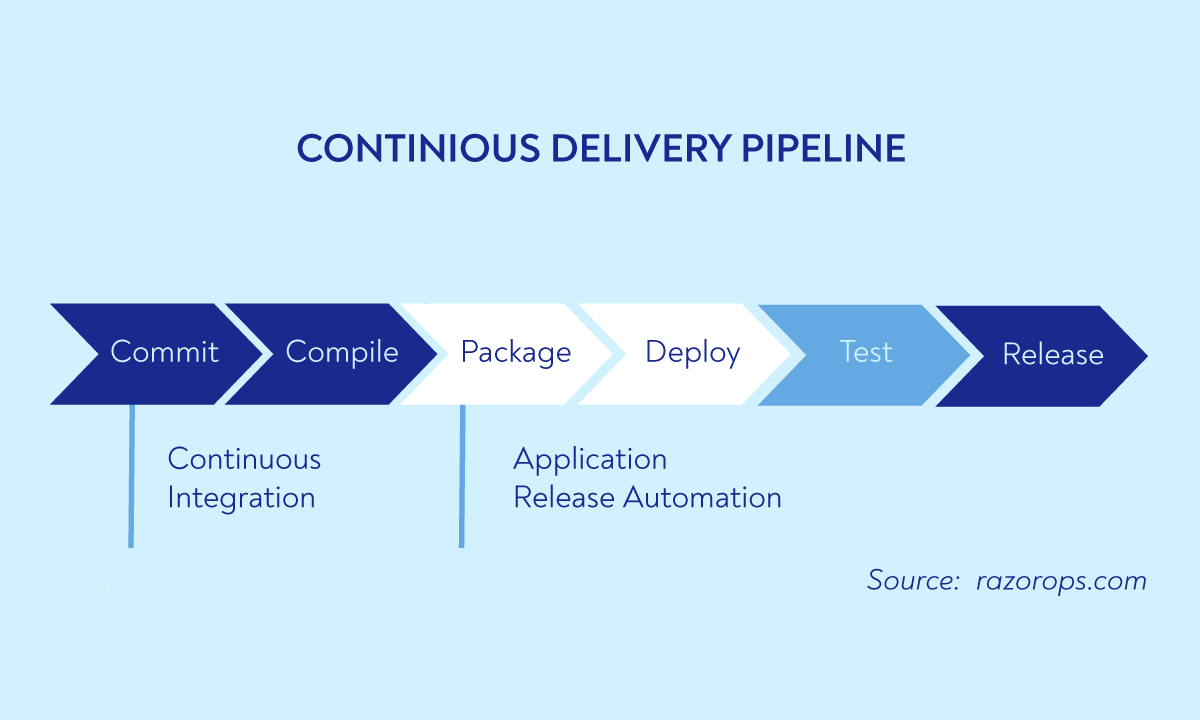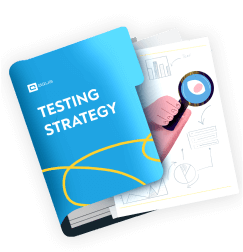Day by day, software development is becoming more and more challenging. While we are constantly doing our best to stay on top of it, and the number of code updates hitting production is growing faster than ever. Let’s discuss the trends changing CD and release automation. So you can make your releases with supersonic and super quality.
If you want to dig deeper into this topic, you can watch a video where we provide a detailed analysis of every trend.

Here’s a look at the nine continuous delivery trends to tweak your entire development for the best:
1. Development evolution
Continuous delivery is a pretty flexible and easily best practices absorbing “guy”. Everything that is for goodwill fits this approach. It speeds up software development significantly, and CD also has to match the pace of the familiar environment changes.
There is an urge for better incorporation of event-driven delivery orchestration, such as microservices orchestration through events. Or microservices are establishing standards for interoperability for an easier connection of existing SDLC tools or switching to different ones. For example, users of the test automation tool aqua can migrate their data from another tool with an Excel file. That is not always the case, especially when migrating from or into older tools. Modern solutions, however, usually have native integrations with popular tools (even competitors!) or REST API support to let teams build flexible tool suites.
2. Cyber shield
Cyber shield is a critical component of any continuous delivery pipeline. It ensures that the software delivered to customers is free from security vulnerabilities and complies with industry standards.
Continuous delivery reduces the SDLC time between the completion of writing the code and the output in production. The release is no longer tied to those few days per month, and some non-critical changes are sometimes left unrevised. Which makes it important to debug a proper pipeline of autotests with “a safety belt” as a rollback in case something goes wrong. But it’s also easy to prevent issues in the first place by introducing more testing for vulnerabilities. Some options are automated code scanning, penetration testing, and security audits.
A cyber shield should also include measures to protect the pipeline from unauthorised access or malicious attacks. This can include secure communication protocols, advanced authentication methods, and regular monitoring of suspicious activity.
A robust cyber shield is essential for maintaining the integrity and trust of the continuous delivery pipeline and protecting the organisation and its customers from potential security threats.
Better security testing with aqua
3. Incorporation of newer tools
I would love to start this talking about this trend with a great quote from one of the CD ambassadors, and he recalls age-old problems that are still here:

"Continuous Delivery is all about designing, adopting or distributing the necessary patterns, tools and processes to help developers and operators to deliver secure and stable code to production environments with high levels of automation, compliance and reusability. Nevertheless, most of the tools, processes and patterns still reflect legacy approaches that hinder the agility required by modern software.
Such is the case of the orchestration pattern, widely implemented in today's Continuous Delivery space, where each one of the resources in the software supply chain knows how to complete their tasks. Still, they depend on a central orchestrator which controls the flow of information between resources and deals with the actual implementation of each step on the path-to-production."
Continuous delivery pursues incorporating all modern approaches. And if getting away from old orchestration approaches means better processes, you have to do it.
For example, low-code test automation tools can simplify and make your quality assurance processes ten times faster. As QA engineers don’t need advanced programming skills to work with such tools, seniors do not have to supervise them as closely. Plus, it is easy to orchestrate automated tests without the extra inspection of seniors.
Or even better… The CD advocate David Espejo offers to adopt patterns from the Event-Driven Architecture development paradigm. It brings the choreographic pattern to your development workflow, making it more independent and autonomous.
Ultimately, Event-Driven Architecture unlocks the possibility to standardise a sufficient set of abstractions and the components of a supply chain within Event-Driven Architecture: “…once generated by one resource, are captured by the following resource, who knows exactly what to do then. It can provide a sufficient set of abstractions that provide the standardization a platform operator would expect when defining the components of a supply chain, while also providing enough flexibility to developers who will see a highly opinionated platform and a very simple contract with the underlying platform, making it so much easier to hot-swap tools at specific steps in the supply chain for different workload needs. “.
And as a result, adopting new solutions is easier on developers as they are more flexible to hot-swap tools according to their workload. They focus on completing certain procedures rather than using the functionality of a particular tool to achieve them.
4. CI/CD principles
Continuous Delivery is a software development practice that emphasises the frequent and automated delivery of software updates to different environments, such as development, testing, staging, and production. CD has already adopted many development principles, such as code modularisation, focusing on APIs for better integrations, and version control. Here are the key components:
- Modularisation of code allows for smaller and more manageable codebases that can be easily tested and deployed. This is particularly important when working with microservices, as each service can be deployed and updated independently without disrupting the entire system.
- Focus on APIs enables better integrations. . APIs provide a simple and consistent way for different software systems to communicate. This allows for tighter integrations between various tools and systems, making it easier to automate the delivery process.
- Version control is arguably the most impactful component of continuous delivery. Storing configuration and code in a version control system allows for easy tracking of changes, rollbacks, and collaboration between different teams. This is essential for CD as it allows for the easy management of different environments and the ability to revert to a previous version in case of problems quickly.
5. Dynamic pipelines
Dynamic pipelines are a software engineering concept where the steps or stages in a pipeline can change based on the input data or other conditions. This allows for flexibility and customization in the processing of data or workflows. Dynamic pipelines can be implemented in various ways, such as through the use of conditional statements, programmatic control of pipeline stages, or data-driven pipeline configuration.
Fast development means more changes which undoubtedly affect the production environment. And the faster you deploy, the more time you get to write and deploy something new again. The number of code changes and their movements within these environments gets enormous. Maintenance of different environments and quality assurance become a headache, especially when working on different core functionality in parallel. But it gets easier with adopting some practices from microservice architecture.
Microservice catalogues provide the necessary visibility to assess the impact of updates before deployment. The shift to event-driven pipelines in continuous delivery methodology allows for tighter audits and less time spent on scripted processes.
Additionally, dynamic pipelines will be implemented to handle microservices based on their level of risk. With low-impact microservices, they are moving quickly, and high-risk microservices are handled with caution. Overall, the field of DevOps continues to evolve and provides opportunities for professionals to excel.

6. Frequent smaller releases
The book Accelerate by Dr Nicole Forsgren, Jez Humble and Gene Kim describes their research on measuring software delivery performance. They found out that change failure rate, deployment frequency, mean time to recovery and cycle time are closely related and positively impact delivery success and profitability. As one of the release automation trends, continuous integration enables safer, faster and better results when more minor releases are shipped more frequently.
According to another CD ambassador Kevin Collas-Arundell, continuous delivery is not a super new trend, but it’s certainly going to demonstrate the same implementation success as we observed in the last ten years. He also reminds four continuous delivery trends that developers pursue while adopting CD and application release automation:
- Delivering sooner so we can deliver faster
- Delivering faster so we can deliver often
- Providing often so we can deliver safer
- Providing safer code so we can deliver sooner
7. Observability and GitOps
More and more applications are developed natively in the cloud, which makes GitOps a necessary approach for better observability.
GitOps is a DevOps practice that uses Git as a single source of truth for managing deployment, operations, and changes in infrastructure as code. It aims to automate the deployment process by ensuring that the desired state of the infrastructure is stored in a Git repository and continuously compared to the actual state.
Observability is a critical aspect of both — Continuous Delivery and GitOps. It provides real-time insight into the performance and behaviour of software systems. Self-service GitOps-based monitoring configuration enables organisations to keep their observability up to date with evolving software requirements. Using GitOps, monitoring configurations can be version-controlled and automatically deployed consistently, ensuring that the monitoring tooling remains in sync with the software it is observing. This self-service approach also empowers teams to manage their monitoring configurations, freeing up time for DevOps teams to focus on other essential tasks. The result is a more efficient and practical approach to observability in CD.
Let me quote yet another CD ambassador Rob Jahn (and let you know that you can do all he recommends with aqua). Rob claims that this approach allows SRE teams to establish guardrails and standards while allowing Dev teams to have the flexibility to control the specific settings using their know-how:
"Defining what to monitor and what to be alerted on will be done by developers by checking and monitoring configuration files into version control systems and applications source code. With each "Commit" or "Pull Request", code gets built, deployed and automatically monitored with dashboards, tagging and alerting rules."
Get stories about trends in QA directly to your inbox
8. Self-serve developer environments
Self-serve developer environments proved themselves as a critical component of Continuous Delivery. They make environment creation and management much quicker.
Self-serve developer environments refer to a setup where software developers can provision, configure, and manage their own isolated, ready-to-code development environments without the need for assistance from a separate IT or infrastructure team.
Theself-service approach eliminates the need for manual configuration. It reduces the time it takes to set up a new environment, allowing developers to focus on writing code. Streamlined development environments also ensure consistency and reduce the risk of early errors affecting the end product.
Self-serve developer environments are increasingly integrated into the CD pipeline, allowing for fast and efficient testing and deployment of new software releases.
9. Everything as code
“Everything as Code” is a philosophy and approach to software development where all aspects of software systems, including infrastructure, configurations, and processes, are treated as code and managed in version control systems. This approach aims to automate and streamline the entire software development lifecycle, making it easier to manage, maintain, and scale systems.
The “Everything as Code” philosophy is setting itself as a cornerstone of Continuous Delivery that has proven to drive significant improvements in the software development process. Studies have shown that organisations that adopt this approach can reduce manual errors by up to 70% and increase the speed of software releases by 60%.
Additionally, tracking changes and the ability to easily roll back to previous versions make it possible to minimise the impact of any potential issues. Furthermore, having all code in a central repository and utilising version control systems result in improved collaboration and standardisation among team members, with up to 80% of teams reporting improved teamwork and communication.
Conclusion
In this article, we described nine emerging continuous delivery best practices that help organisations achieve faster and more reliable software releases. From adopting “Everything as Code” to using self-service developer environments, these trends transform how software is developed and delivered.
By staying up-to-date with the latest CD trends, organisations can improve their development processes and remain competitive in a rapidly changing technology landscape. Implementing the proper CD practices and tools can help organisations achieve faster time-to-market. Adopting the latest CD trends will further improve collaboration, bring or maintain standardisation, and reduce the risk of errors.

Download the testing strategy template which helped us to speed up releases x2






